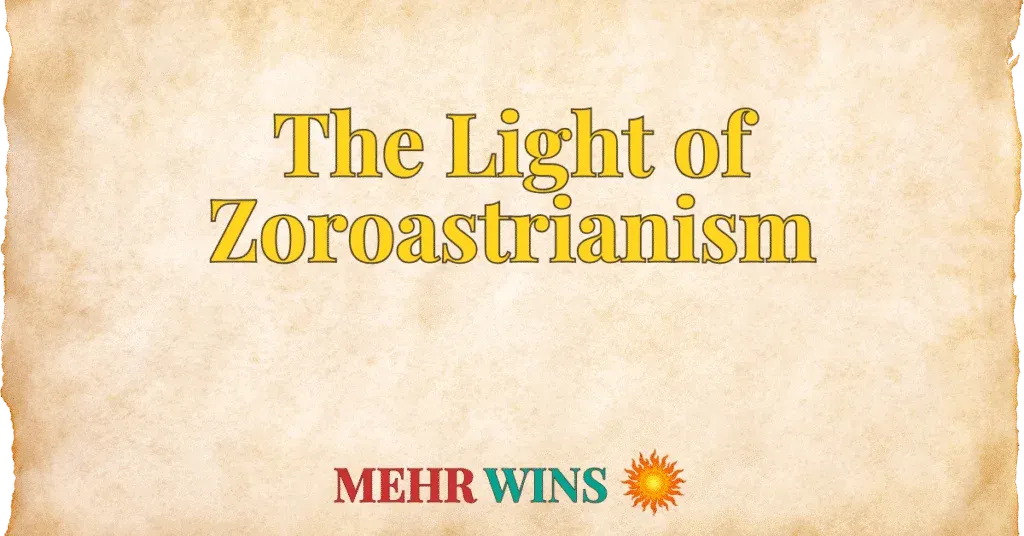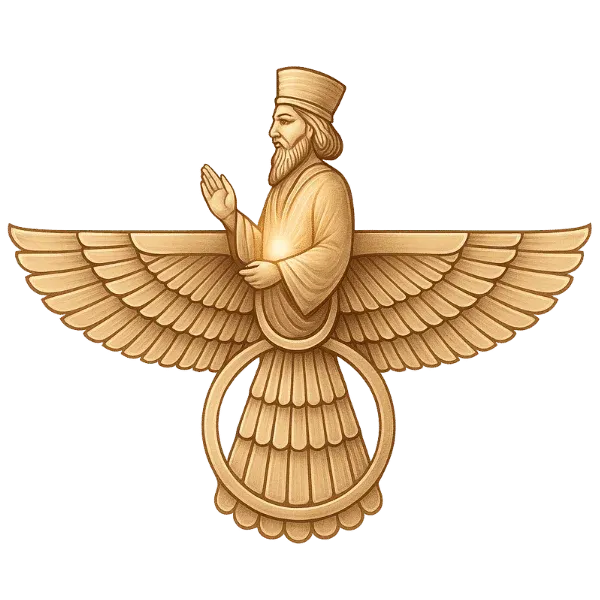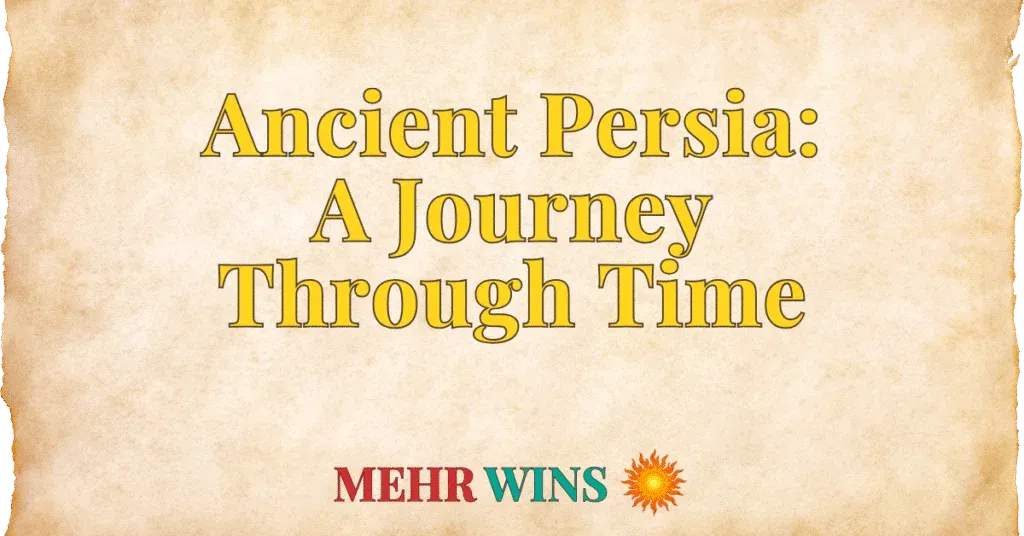
Long before many modern religions and nations, a deep philosophy came from the heart of ancient Persia. This way of thinking offered an invitation to live mindfully, act with a clear goal, and follow unchanging truths. This marked the beginning of Zoroastrianism, one of the world’s most ancient spiritual traditions. Its teachings, which can be traced back more than 3,000 years, continue to offer deep meaning and direction to its followers today. Unlike some other early belief systems, Zoroastrianism did not focus on complex myths or demanding rituals alone. Instead, it put a strong emphasis on the individual’s role in the world and the power of personal choice. Its core ideas, so ahead of their time, even influenced later major religions, sharing concepts like heaven and hell, and the idea of a final judgment.
Zoroastrianism was started by the teachings of the prophet Zarathustra, also known as Zoroaster. He was a spiritual leader who lived in ancient Iran, facing challenges as he shared his new ideas. Through his spiritual insights, he taught about one holy source of all goodness and wisdom: Ahura Mazda, the Wise Lord. Ahura Mazda stood for truth, justice, and clarity. He was seen as the kind Creator of all that is good, bright, and orderly in the universe. Zarathustra emphasized that each human being possesses the inner power to choose to live by that truth, by the path of Ahura Mazda. A main idea of Zoroastrianism is to focus on personal responsibility and purposeful action in this life, believing that our choices here on Earth truly shape the world around us. This faith encourages an active part in making the world a better place, rather than simply waiting for a future reward.
A main part of Zoroastrian belief is a three-part path: good thoughts, good words, and good deeds. These are not just ideas to think about, but a daily practice that guides every moment. This path shows a way of looking at the world where universal order (Asha) and disorder (Druj) are always present. Asha represents truth, cosmic order, balance, and doing what is right, connecting everything in the universe in a harmonious way. Druj, on the other hand, stands for confusion, lies, and things that are out of balance. Every person has the ability to shape the outcome through their actions, choosing to live by Asha and work towards a world of truth and light. People make this choice not just once, but always, in every thought, word, and action, making each moment a chance to create goodness. This constant choice empowers individuals, giving them a vital role in the ongoing progress of the world.
One of the most lasting and important symbols in Zoroastrianism is fire. It is not worshipped as a god, but honored as a clear sign of truth and God’s presence. Fire, with its purifying flames and radiant light, perfectly represents the wisdom and constant energy of Ahura Mazda. In fire temples, holy flames are kept burning without end. These sacred fires serve as a powerful reminder of Ahura Mazda’s endless wisdom and the inner light we are all meant to protect within ourselves. Fire shows purity, awareness, and clarity. It helps people focus their minds during prayers and quiet reflection. It does not ask for loyalty it asks for attention, inviting us to be fully present and mindful. It asks us to live in a way that is like fire: steady, clear, always active, and giving life to all around it. The ritual care of these fires also symbolizes the dedication and continuous effort required to live a life aligned with truth.

Another important image in Zoroastrian tradition is the Faravahar, a winged figure that shows the soul’s journey through life. This widely recognized symbol is rich with meaning. Even though people understand its parts in different ways, the main message is clear: we are responsible for our own path and our own choices. The human shape in the center of the Faravahar shows the individual person. The large wings on either side stand for the three good ways of living: good thoughts, good words, and good deeds, showing how these lift the soul upward. The ring around the figure shows that the soul lasts forever and reminds us of the endless cycle of life. The two streamers below, stretching out in opposite directions, show the constant choice every person faces between universal order (Asha) and disorder (Druj). This symbol deeply talks about intention, freedom, and the duty to live with purpose, guiding individuals towards moral growth and spiritual progress. It is a powerful reminder of life’s spiritual journey and the moral compass needed to navigate it.

Many people think Zoroastrianism is a religion from the past, but it is still practiced today by groups of people in parts of India, especially among the Parsis, and by Zoroastrians in modern-day Iran, as well as in communities all over the world. The Parsi community, who mostly settled in India after leaving Iran centuries ago to escape persecution, have kept the traditions alive for generations. Today, Zoroastrianism may not have many followers, but its spirit is still very much alive in these devoted communities. Its traditions, its values, and its calm sense of clarity continue to guide those who follow its light, celebrating important holy days like Navroz (the spring equinox) and maintaining their ancient fire temples as centers of worship and community. Despite its small numbers, its influence on other major religions and its enduring philosophical depth remain significant.
The message of Zoroastrianism fits well with the vision of Mehr Wins. While this space is not religious, it shares values that are like the core of this tradition: truth, light, and love. These are not just words, but ways of living that shape how we think, speak, and act. These words show a deep moral base: to live honestly, to act clearly, and to care a lot. They speak to the inner fire of generosity and kindness that defines the spirit we wish to honor and share. Both Mehr Wins and Zoroastrianism, in their own ways, invite us to participate actively in bringing more good into the world.

One of the designs featured here includes a white lion standing under a half-sun whose rising rays look like Zoroastrian flames. This design was made not to copy holy pictures, but to quietly show the spirit of something old and important. The lion can represent calm strength and courage. The sun, with its flame-like rays, speaks to light, warmth, and the guiding presence often associated with Ahura Mazda’s wisdom. It is a sign of calm strength, inner fire, and quiet strength, reflecting the inner resilience found in both the ancient faith and the personal journey it inspires.
Zoroastrianism teaches that we are able to actively take part in shaping the world. We are here to protect what is good and to bring order where there may be confusion. This means living with purpose and making choices that add light and kindness to everyday life. The flame is still burning, symbolizing the enduring presence of truth and wisdom. The path of truth is still open, inviting each individual to walk it with awareness. And the choice, always, is still ours to make each day, shaping our lives and the world around us with goodness.



